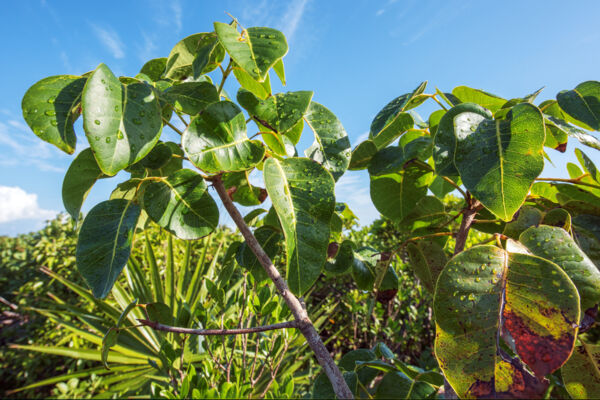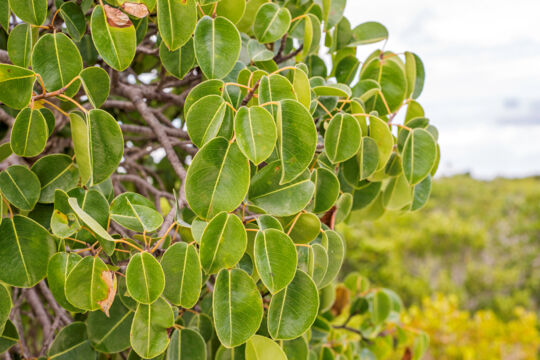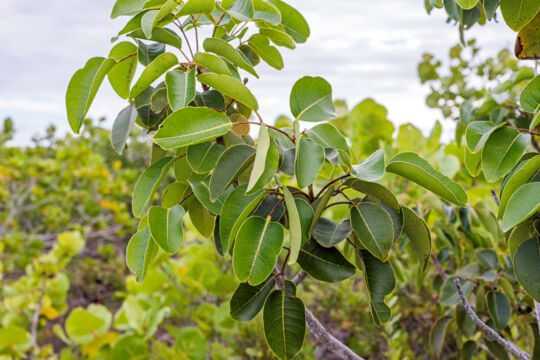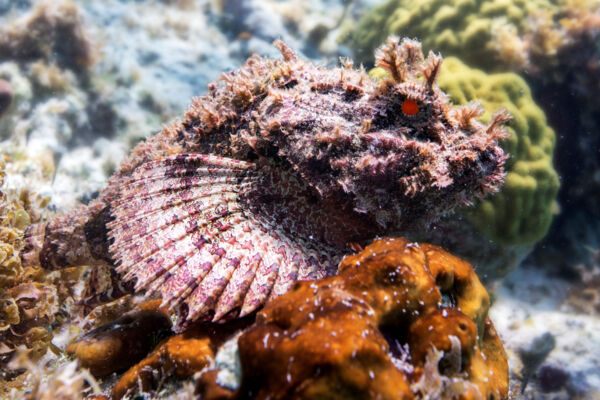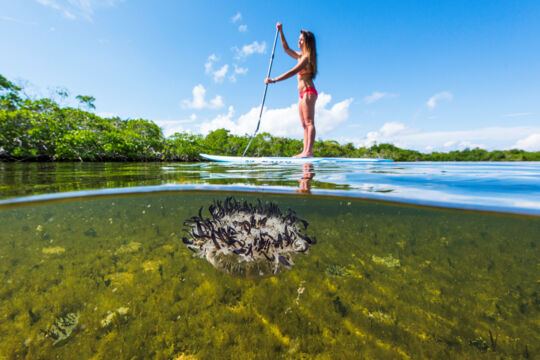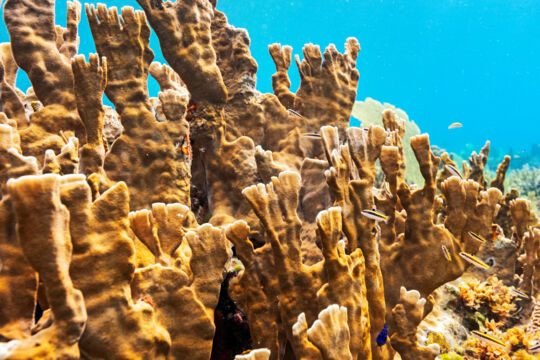Turks & Caicos Dangerous Plants, Insects & Animals
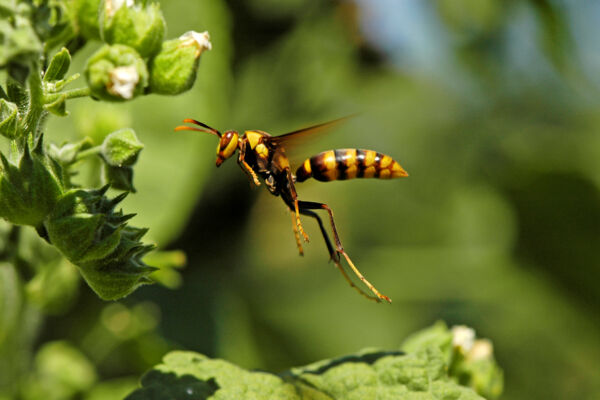
The Turks and Caicos is very fortunate in not having any serious poisonous plant or animal risks. This article discusses the most significant threats. For information on medical care and clinics, see Health, Doctors, and Medical Information.
Snakes
The Turks and Caicos does not have any venomous snakes. There are three types of snakes found in the country: two miniature boas and a very tiny blind snake. These are among the least dangerous snakes (to humans!) that could be found anywhere on the planet. The Caicos dwarf boa, the most common snake in the country, is likely the smallest constricting snake in the world and primarily preys on tiny lizards.
Insects
Paper wasps are the only venomous insects that a visitor might typically encounter. Although paper wasp stings are very painful, they are usually only serious to those who are highly allergic.
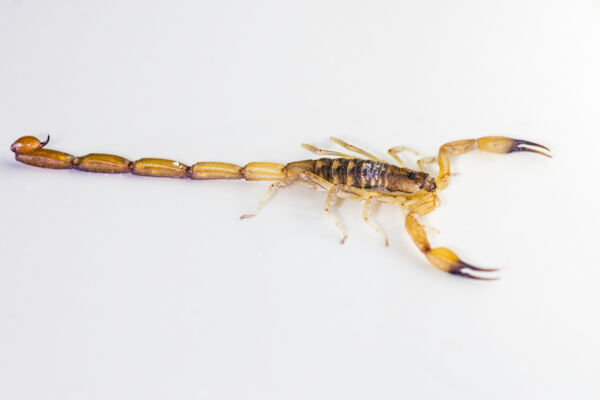
A giant centipede and the small Caribbean scorpion are found here. As with the paper wasp, stings are typically only dangerous to those with certain serious allergies. Although a bit scary looking, these arthropods are nocturnal and very uncommon.
The native centipede in the Turks and Caicos is the Caribbean Giant Centipede (Scolopendra alternans), which can reach a length of almost a foot long (30 cm), and large examples can be quite an amazing sight!
Both the brown recluse and the black widow spiders have been sighted in the country, but are incredibly rare. There are no recorded cases of bites from either of these spiders.
Mosquitoes and No-See-Ums
Plants and Trees
There are two common types of poisonous trees that can cause rashes if touched: the Coral Sumac (Metopium Toxiferum), also known as poisonwood, and the Manchineel (Hippomane mancinella). Both look alike and are generally found in coastal areas such as the Chalk Sound National Park and in the vicinity of the Crossing Place Trail. These trees should be recognized and avoided if venturing off the beaten path.
The Manchineel is less common than the Sumac, yet it does produce small fruits. Do not touch, pick, or eat the fruits, as they can cause death if ingested. Unlike some other tropical destinations, the Turks and Caicos for the most part does not have any wild tasty produce to pick. Much of the “fruit” found growing in the Turks and Caicos isn't deadly, yet saying that they are an acquired taste would be an understatement of their unpalatableness.
Rosary Pea
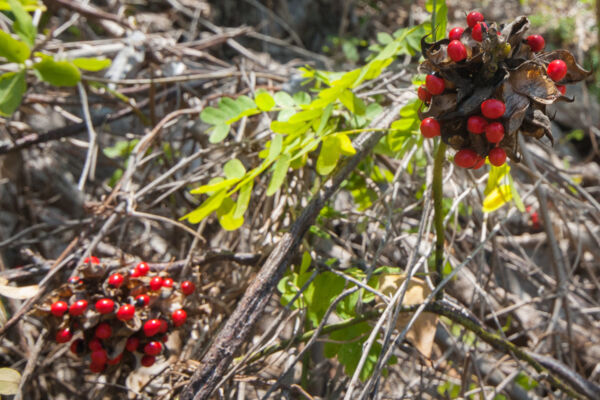
Another plant which is only found at a few locations in the Turks and Caicos is the toxic Rosary Pea (Abrus precatorius).
This plant commonly has small red pea-sized fruits, which have been used to make beads and other crafts. Ingesting the small red fruits can be fatal (the toxicity is due to the presence of abrin), and a single seed can be fatal to children and adults alike.
A main location that tourists will encounter this plant is growing near the Indian Cave on Middle Caicos.
There are a few other native poisonous and toxic plants found in the Turks and Caicos, such as the yellow flowering allamanda vine. The more toxic of these other species are generally unlikely to be encountered by visitors.
Marine Life
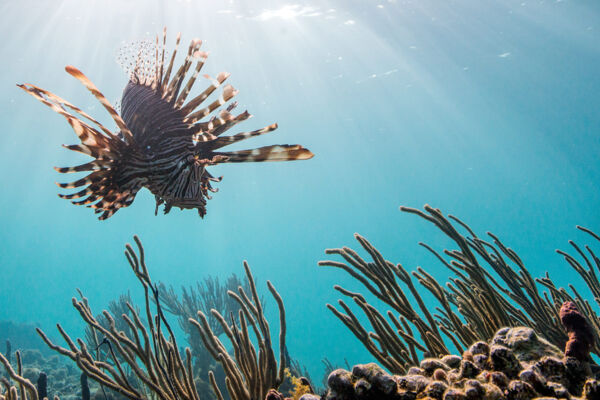
There are a few marine creatures to avoid when in the spectacular ocean surrounding the Turks and Caicos.
Lionfish
As is increasingly becoming the case in the Caribbean, Florida, and the warmer Atlantic waters, lionfish can be found here. An invasive predatory species from the Indo-Pacific, these spectacular looking fish have venomous spines on their back and are capable of giving very painful stings. Although extremely uncommon, in the worst-case scenarios these stings can cause temporary seizures or paralysis. Fortunately, the lionfish are not aggressive to humans and only sting in defensive situations.
Closely related to the lionfish, the venomous spotted scorpionfish (Scorpaena plumieri)can also at times be spotted in the ocean in the Turks and Caicos. A master at camouflage, this bottom dweller has a spine that’s capable of giving a sting similar to a lionfish’s sting. Scorpionfish can be difficult to spot, but are often only found near reefs (yet another good reason to not touch or step on the coral!). They are quite uncommon.
Lionfish are the only fish or marine product that can be harvested by spear in the Turks and Caicos. Hunting for lionfish is an exciting genre of fishing!
Jellyfish
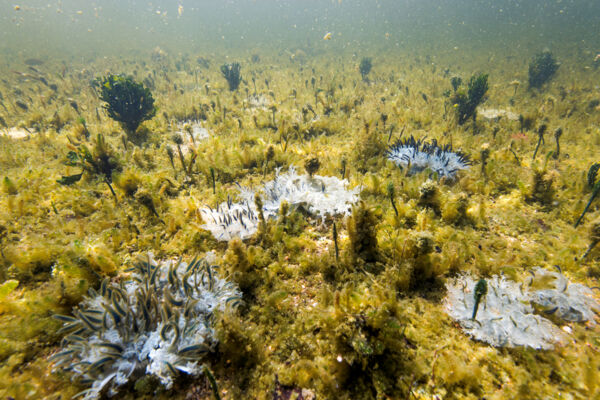
Various types of jellyfish can be found throughout the country. The most common is the upside down jellyfish, which are only found in swampy wetlands and some sheltered canals. The sting from the upside-down jellyfish is quite mild, and typically results in small itchy welts.
On rare occasions (most often in the spring months), thimble jellyfish appear in swarms and can disrupt your day at one of the popular beaches. These jellyfish are very small (usually less than an inch in diameter) and the types spotted locally are a transparent green or brown. As with the upside-down jellyfish, the sting from the thimble jellyfish is mild and causes a small itchy rash, but symptoms can persist for more than a week in some people.
In the unlikely event that thimble jellyfish are present at a certain area, we recommend that you simply choose another beach. It’s important to be aware that both the jellyfish and their larvae (almost impossible to see) can cause the stings, so it’s best to avoid the location with the jellyfish rather than just the jellyfish themselves.
Other varieties of larger jellyfish are sometimes spotted (often in the deeper water), but are uncommon enough to be more of a curiosity than a nuisance.
Stinging and Fire Coral
Several types of coral-like hydrocorals are capable of giving stings if touched, which may result in instant or delayed pain, itching, or swelling, similar to the symptoms of a jellyfish sting.
Stinging hydrocorals can appear like both hard and soft coral, but the most common variety in the Turks and Caicos is the yellow branching fire coral.
For the wellbeing of yourself and the environment, don’t touch anything on the reef!

